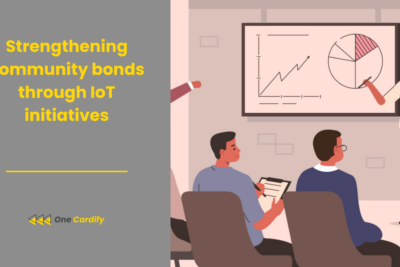
Enhancing water quality monitoring with IoT
The technological progress enables better environmental control, particularly in one of the key issues in the area of the water quality. In this sense, the incorporation of the Internet of Things (IoT) technologies into water quality monitoring systems provides an innovative method for saving clean water for all.The use of IoT technology in this area makes it possible to have instant data acquisition, a more detailed analysis, and immediate correction of pollution issues. This further makes the monitoring terms highly effective and greatly supports the environmental protection and the public health.The purpose of this blog post is to reveal the ways that Iot is impacting the water quality monitoring and what benefits we, as the society, can get from its implementation.
The Rise of IoT in Environmental Monitoring
IoT is a disruptive force in many fields such as environmental monitoring. Physical devices connected to the internet make IoT effortless in the gathering and transfer of data between platforms.Within the field of water quality control, IoT devices such as sensors are used in different localities to monitor parameters such as pH, temperature, turbidity and the occurrence of dangerous substances. This data is vital for instant monitoring of the water safety and quality.In addition, IoT enables monitoring water bodies from a distance which simplifies the management of large or unreachable areas. Data being available right away enables the authorities and interested parties to make informed decisions promptly.Incorporation of IoT devices in cloud computing and data analytics tools also improves the ability to carry out advanced water quality analysis, prevent any issues before they emerge.
Related content
Applications and Benefits
One of the principle uses of IoT in the management of water quality is in the control of drinking water sources. The sensors that are enabled by the IoT can immediately detect contaminants and changes in water quality, which guarantees the safety of municipal water systems.In the same vein, when it comes to the agricultural sector, IoT technology makes water resources management more effective, ensures water used for irrigation is monitored to be of a safe level free from harmful chemicals or pollutants.Iot systems also play an important role in pollution control activities, detecting the sources of pollution in natural water bodies and facilitating timely remediation actions. This also assists in the preservation of the aquatic ecosystems as well as the provision of leisure activities and fisheries.The scalable nature of IoT solutions implies that they can be adapted to the requirements of particular projects or locations, making it a flexible instrument of water quality control.
Challenges and Solutions
Although, there are many benefits, IoT practices in water quality monitoring encounter several problems. The barriers include the high starting cost of implementing the IoT infrastructure, the issues of data safety and privacy, and the requirement for skilled personnel to handle and analyze the data collected.Current efforts to solve these problems are targeted at reducing the cost of IoT devices as well as creating simpler data analysis tools. Also, the use of strong security practices and capacity building specifically for stakeholders is very vital in the successful deployment of IoT in this industry.
Future Perspectives
With the advancement of IoT technologies, the prospects of using IoT as an innovative driver for water quality control are limitless. The future may bring with it the emergence of more sophisticated sensors that can detect a greater variety of pollutants in smaller concentrations.Further, the fusion of artificial intelligence (AI) with IoT gadgets could result in predictive models for water quality, which allows proactive actions against contamination. Such an active attitude would make water quality monitoring programs much more efficient.
Conclusion
Water quality monitoring integrated with IoT is a huge leap in how we can ensure proper protection and management of water resources. Through leveraging real-time data analysis power and internet connectivity, we can deliver safe, clean water, also preserving our environmental heritage.Advanced water quality monitoring journey demands technological not only innovation but also collaborative effort between governments, businesses, and individual to overcome the challenges and benefits that IoT brings to this crucial area.
The Internet of Things (IoT) refers to a network of physical devices interconnected through the internet, enabling them to collect and exchange data seamlessly.
IoT enhances water quality monitoring by providing real-time data collection, allowing for immediate analysis and action to address any contamination issues, significantly reducing the time and resources required for traditional monitoring methods.
The benefits include real-time monitoring, precise analysis, efficient resource management, pollution control, and the potential for predictive maintenance to prevent issues from arising.
Challenges include the high cost of initial setup, data security and privacy concerns, and the need for technical skills to interpret complex data.
Yes, IoT technology can monitor irrigation water, ensuring that it is free from harmful substances, thus supporting sustainable agriculture.
Future advancements may include more sensitive sensors, the integration of AI for predictive analytics, and enhanced capabilities for detecting a broader range of pollutants at lower concentrations.
Overcoming these challenges involves reducing the cost of IoT devices, developing user-friendly data analytics, adopting stringent data security measures, and fostering technical expertise among users and stakeholders.
Acknowledgment
This study of IoT in improving water quality monitoring is a portrait of a world in which modern technology is striving to preserve and conserve our natural resources. By continued research as well as cross-sector partnerships, we can address the challenges and realize every bit of IoT’s capability in the sustainable management of water.
Final Thoughts
Adopting IoT (Internet of Things) in the monitoring of water quality is the beginning of a new age of environmental preservation by making the process more effective and informative. As the innovations and adaptation continues, the dream of having the clean and safe water becomes easier to be achieved thus ensuring healthier future for the coming generations.Let’s embrace the path of progress and accountability, where every drop of water is watched, regulated and preserved to the highest possible degree.The introduction of IoT into water quality management is more than improving, it is a must in our continuous struggle to save the life on our planet.






Related Posts